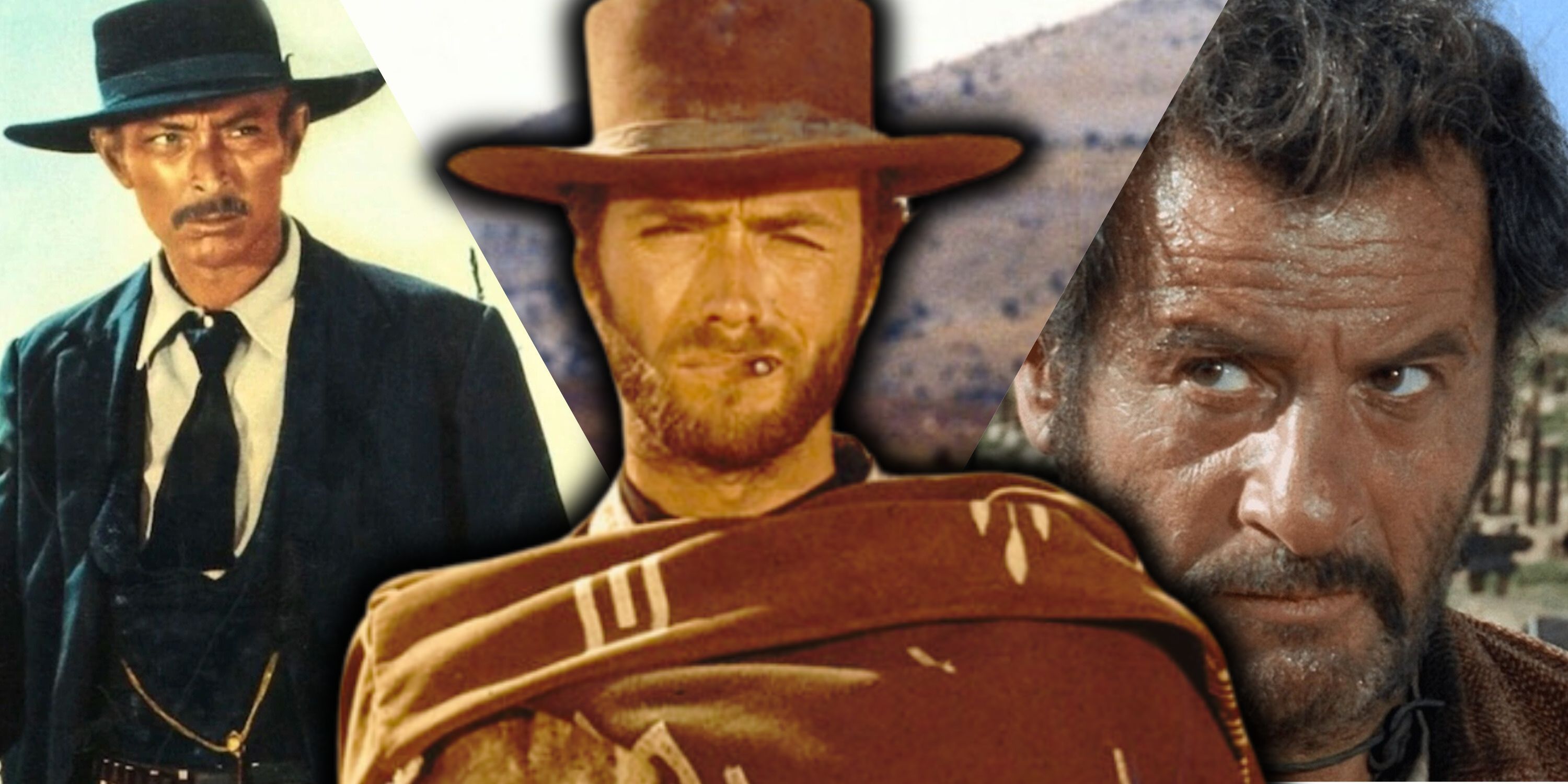Sergio Leone's Dollars Trilogy introduced the world to the Man With No Name, a drifter bounty hunter in the Old West. Played by Clint Eastwood in his breakout role, the antihero, also dubbed "Manco" for often concealing one arm below his poncho, sets out on a variety of adventures for personal enrichment. However, along the way, he's often roped into fighting some of the West's worst outlaws and becomes a reluctant hero for those in need. Along the way, he makes sure to maintain an advantage over competitors and outlaws alike, proving himself to be a savvy and cunning warrior as much as a bounty hunter.
The Dollars Trilogy stands out as one of the greatest trilogies in cinematic history, as well as a turning point for the Western genre, with Clint Eastwood's antihero becoming an icon of film. These films left behind the romanticism of John Wayne movies for a grittier, pulpy combination of action and adventure, as the Man With No Name takes on a slew of outlaws. From partnering with a seasoned gunslinger to his quest for gold, Eastwood's role in the trilogy came with some of the most iconic scenes in not just Westerns but cinema as a whole.
10 Tuco Gunned Down His Attacker From A Bathtub
|
The Good, the Bad and the Ugly |
IMDB Rating |
Runtime |
|
1966 |
8.8 |
161 Minutes |
The Good, the Bad, and the Ugly follows the Man With No Name as he teams up with an outlaw, Tuco, to scam townships by turning the criminal over, collecting the bounty, and rescuing him from execution. Along their journey, the pair find themselves at odds, only to again have to work together when each of them knows half the location of a hidden crate of gold. After splitting up, Tuco returns to a small town ravaged by the Civil War, where he takes a soak in a bathtub. While lying there, a one-armed gunfighter pursuing him shows up and explains how he's trained to shoot with his left arm so he can bring down Tuco -- only for the outlaw to shoot him from the tub.
Tuco's cold shooting accompanied by the line "when you have to shoot, shoot, don't talk" has since become a popular interaction in cinema, with films like Die Hard referencing it. It also reminded audiences that, despite being the film's comic relief, Tuco was still a dangerous outlaw and posed a threat to his rivals -- which is key to setting up the stakes of the final standoff.
9 Man With No Name And Tuco Got Themselves Captured By The Union
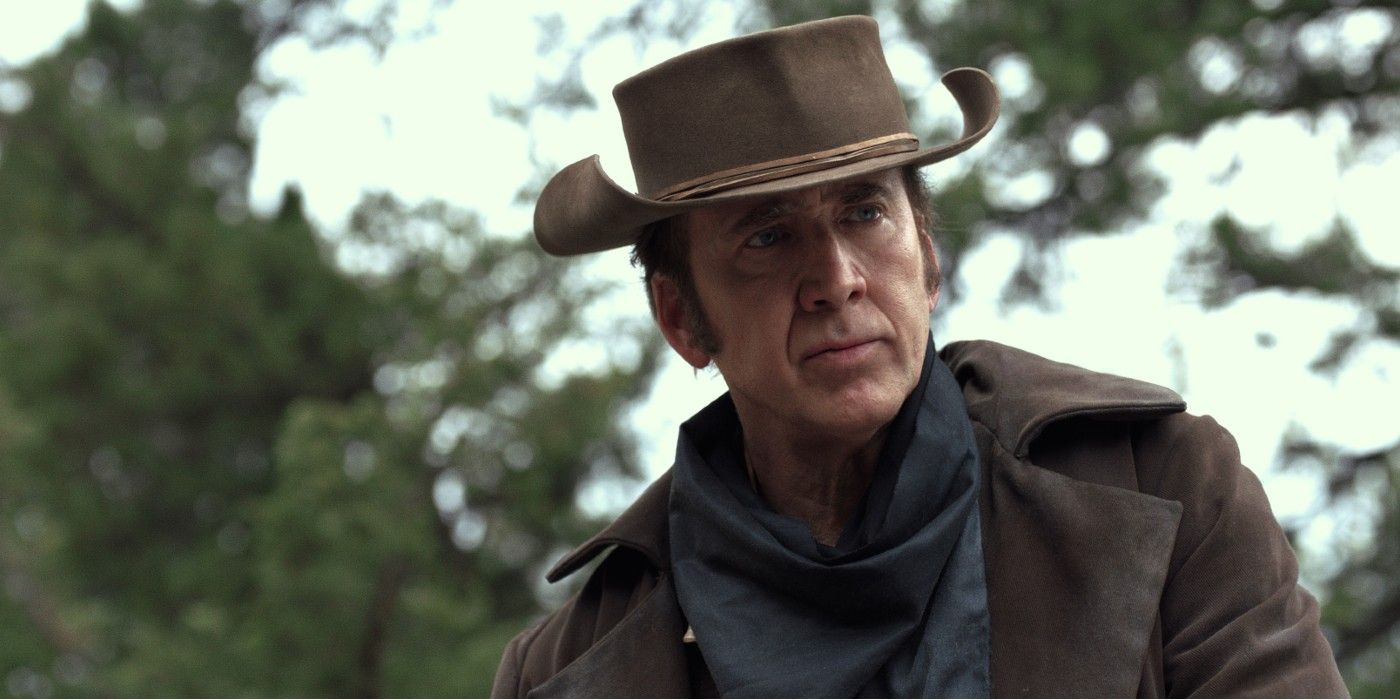
REVIEW: Nicolas Cage Carries the Basic but Satisfying Western The Old Way
Even if nearly everything about Nicolas Cage Western The Old Way is obvious and predictable, the filmmakers deliver the familiar material effectively.|
The Best Westerns For Kids |
|
#1 - Back to the Future Part III |
|
#2 - The Lone Ranger |
|
#3 - Fievel Goes West |
During their hunt for gold, the Man With No Name and Tuco continued their uneasy partnership, riding their carriage through the South. Along the way, they see an approaching cavalry unit, as Tuco hurriedly attempts to take off his Confederate disguise, only for Manco to put him at ease by pointing out the soldiers are grey. This leads to the outlaw calling out war chants, insulting General Grant, and praising Lee. When the soldiers get close, they put the fear of god into the pair when they dust off their uniforms, revealing their blue Union colors.
The short scene is a great moment of comic relief as the Man With No Name and Tuco confidently assess the situation, with the latter singing the praises of the Confederacy. The scene marks a turning point in their quest as it places them in the control of Angel Eyes, who later tortures Tuco for information and brings Manco along for his search for gold. The scene disrupts their partnership and sets them on the road to their later confrontation.
8 The Man With No Name Had A Friendly Shoot-Off With Mortimer
|
For A Few Dollars More |
IMDB Rating |
Runtime |
|
1965 |
8.2 |
132 Minutes |
After arriving in town to pursue El Indio, Mortimer came across a gunfighter who attempted to kill him, allowing him to show off his long-range six-shooter. This sets the stage for his later confrontation with the Man With No Name, who tries to run the colonel out of town. This leads to a shoot-off between the two, with Mortimer using the advantage of his gun's long range to blow his opponent's hat into the air.
The shoot-off between Mortimer and the Man With No Name does a great job of establishing the colonel as one of the antihero's few equals, leading to a partnership of mutual respect. After seeing the older man is a force to be reckoned with, Manco shares a drink with him and they discuss their plan to bring down El Indio. Here, For A Few Dollars More becomes a rarity among Westerns: an unofficial buddy cop movie, replete with stakeouts and an undercover job.
7 Audiences Were Shown The Civil War Up Close
|
The Best Sergio Leone Movies (Per Collider) |
|
#1 - The Good, the Bad and the Ugly |
|
#2 - Once Upon A Time In America |
|
#3 - Once Upon A Time In The West |
As Tuco and the Man With No Name made their way toward the cemetery to find their gold, they faced their most challenging obstacle yet: A full-blown Civil War battle for control of a bridge. From the moment they arrive, the scene instantly stands out as one of Leone's most beautiful sets, with a detailed slope of trenches, soldiers on horseback, and the river between the two sides. However, when the outlaws realize the battle for the bridge is standing between them and their fortune, they decide to blow it up, thereby removing the obstacle of war.
The battle for Branston Bridge is a harsh look at the American Civil War, making the fighting seem senseless from the perspective of the two protagonists. After all, they watch hundreds of men die for a bridge they ultimately destroyed anyway. This scene stands out as one of many indicators that has led many to view The Good, the Bad, and the Ugly as a subtle anti-war film. Setting aside its historicity, it was here that the film went from being a simple adventure to a Western epic.
6 The Man With No Name Had An Epic Introduction
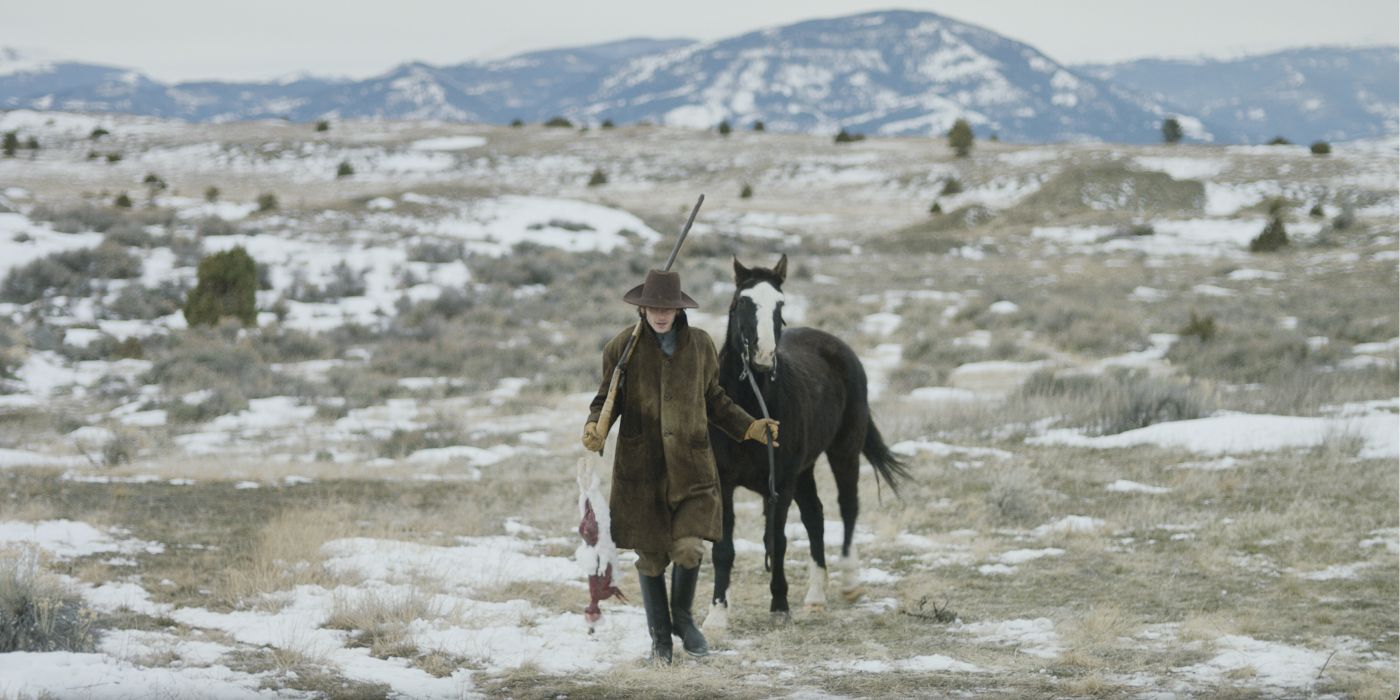
REVIEW: Organ Trail is a Solid Western That Isn't as Scary as Its Title Suggests
Organ Trail is a solid Western with thriller elements, but it can't quite reach the horrific heights it's aiming for. Here's CBR's review.|
A Fistful Of Dollars |
IMDB Rating |
Runtime |
|
1964 |
7.9 |
99 Minutes |
A Fistful of Dollars begins with the Man With No Name riding into a small town, San Miguel, where he learns of the violent Rojos, a family of smugglers. After meeting the local innkeeper, Silvanito, the stranger heads out to confront a group of gunmen for insulting him. Challenging them, he manages to shoot all four of them without breaking a sweat, showing that he's one of the quickest draws in the West.
As the audience's introduction to the Man With No Name, the opening scene of A Fistful of Dollars achieves everything it sets out to do: It shows the skill of the Stranger, it establishes Clint Eastwood as a new movie hero and it sets the stage for his reputation and role in the town. The scene perfectly encapsulates the kind of man the antihero is, someone who stands up to bad guys and knows his own abilities with a gun.
5 The Hero Won A Duel With Makeshift Body Armor
|
The Best Clint Eastwood Movies (Per Collider) |
|
#1 - The Good, the Bad and the Ugly |
|
#2 - Million Dollar Baby |
|
#3 - Unforgiven |
A Fistful of Dollars sees the Man With No Name take on two rival crime families in San Miguel, with whom he plays against one another, so he can make off with a small fortune. However, when things turn personal, he takes on the dastardly Rojo brothers to free one of his friends. With a metal plate concealed beneath his poncho, he confronts the Rojos head-on, confounding them as he gets back up after each of their bullets hits him.
The final due in A Fistful of Dollars is one of the Western genre's most iconic moments, so influential it was copied by Marty McFly at the end of Back to the Future Part III. Countless films have copied the famous deception, proving it to be one of the most enduring and memorable in the genre, let alone the trilogy. The film showcases the intelligence of the antihero, proving there's more to him than a six-shooter and poncho.
4 Angel Eyes Was Terrifying From The Outset
|
The Best Clint Eastwood Movies That Aren't Westerns |
|
#1 - Dirty Harry |
|
#2 - Every Which Way But Loose |
|
#3 - The Gauntlet |
Lee Van Cleef's performance as Angel Eyes begins with his arrival at the home of a former Confederate soldier by the name of Stevens. From the moment he darkens the doorway of his target, he commands the title of the trilogy's best villain. His entrance becomes all the more chilling when, after getting the information he needs, he kills Stevens, along with one of his sons, leaving his wife to find their bodies.
The introduction of Angel Eyes is key in setting up the fact that he's a man of skill and determination rivaled only by the Man With No Name. After discovering that there's a crate of gold waiting to be found, the killer even murders his employer, further reducing the competition for finding the gold. Everything about his entrance, whether it's Leone's long shots, the silent tension, or his cold, dispassionate demeanor made clear that Angel Eyes truly was the Bad in the film's title.
3 Ennio Morricone Made The Ecstasy Of Gold A Masterpiece Of A Scene

REVIEW: Surrounded Is a Riveting, Personal Western That's More Than Meets the Eye
Letitia Wright and Jamie Bell deliver phenomenal and emotional performances in Anthony Mandler's poignant western, Surrounded.|
The Best Lee Van Cleef Westerns (Per ScreenRant) |
|
#1 - For A Few Dollars More |
|
#2 - Death Rides a Horse |
|
#3 - Day of Anger |
To say that the Dollars Trilogy is as much the crowning achievement of Ennio Morricone as Sergio Leone would undersell the career-defining work the composer put into the films. Nowhere was this as clear as the "Ecstasy of Gold" sequence, which follows Tuco as he runs through the graveyard in search of Arch Stanton's tombstone -- after narrowly surviving his partner's cannon fire.
The Ecstasy of Gold is a great example of what good music can do, holding the attention of audiences as Tuco runs around, with Morricone's score doing almost all of the work. With Eli Wallach perfectly portraying Tuco's desperation for the gold, the fast-paced running scene set the stage for the film's grand finale.
2 Colonel Mortimer Found Justice In The End
|
The Best Clint Eastwood Directed Movies |
|
#1 - Unforgiven |
|
#2 - Letters From Iwo Jima |
|
#3 - Million Dollar Baby |
For a Few Dollars More follows the arrival of Colonel Mortimer to a town in the Old West, where he pursues a local outlaw, El Indio, for the murder of his sister. The criminal uses a musical locket he stole from the woman as a countdown for his duels, using the advantage of knowing when the chimes end. Mortimer teams up with the Man With No Name to bring down the gang and split the bounty, using a planned heist to trick the criminals, leading them right where they want them.
While the duo manage to gun down most of the outlaw's gang, the killer catches Mortimer unarmed and uses the chimes to count down to his death. However, before they can end, the Man With No Name appears, Mortimer's locket in hand, and evens the odds. Now armed, Mortimer easily outdraws El Indio, and avenges the murder of his sister, later riding off into the sunset as he leaves his friend to claim the full bounty. The scene is one of cinema's most underrated endings, with the scales of justice now even, Manco with his reward and a satisfied Mortimer riding off to his next adventure.
1 The Final Showdown Gave The Trilogy A Perfect Ending
|
The Best Clint Eastwood Movies |
|
#1 - The Dollars Trilogy |
|
#2 - Unforgiven |
|
#3 - Million Dollar Baby |
After finally arriving at the Civil War graveyard for the gold, the Man With No Name and Tuco are forced into a tense stand-off with Angel Eyes. As the only man who knows exactly where the gold is, Manco writes the location on a rock and leaves it in the middle of the circle, the three men pacing themselves away for the final showdown. With Morricone's score sounding in the background, the trio stares down one another, the camera cuts increasing as audiences are shown close-ups of the characters, with the tension building to the inevitable draw.
The trio's stand-off is one of the most famous in cinema, brilliantly culminating in the reveal that Man With No Name stole Tuco's bullets. The scene ends with the antihero gunning down Angel Eyes, who falls into an empty grave as Tuco angrily fumbles with his gun. With the villain dead and his dastardly partner disarmed, the antihero finally gets his gold, splits it with the outlaw as promised, and rides off with his fortune -- thus completing the perfect Western trilogy.
-
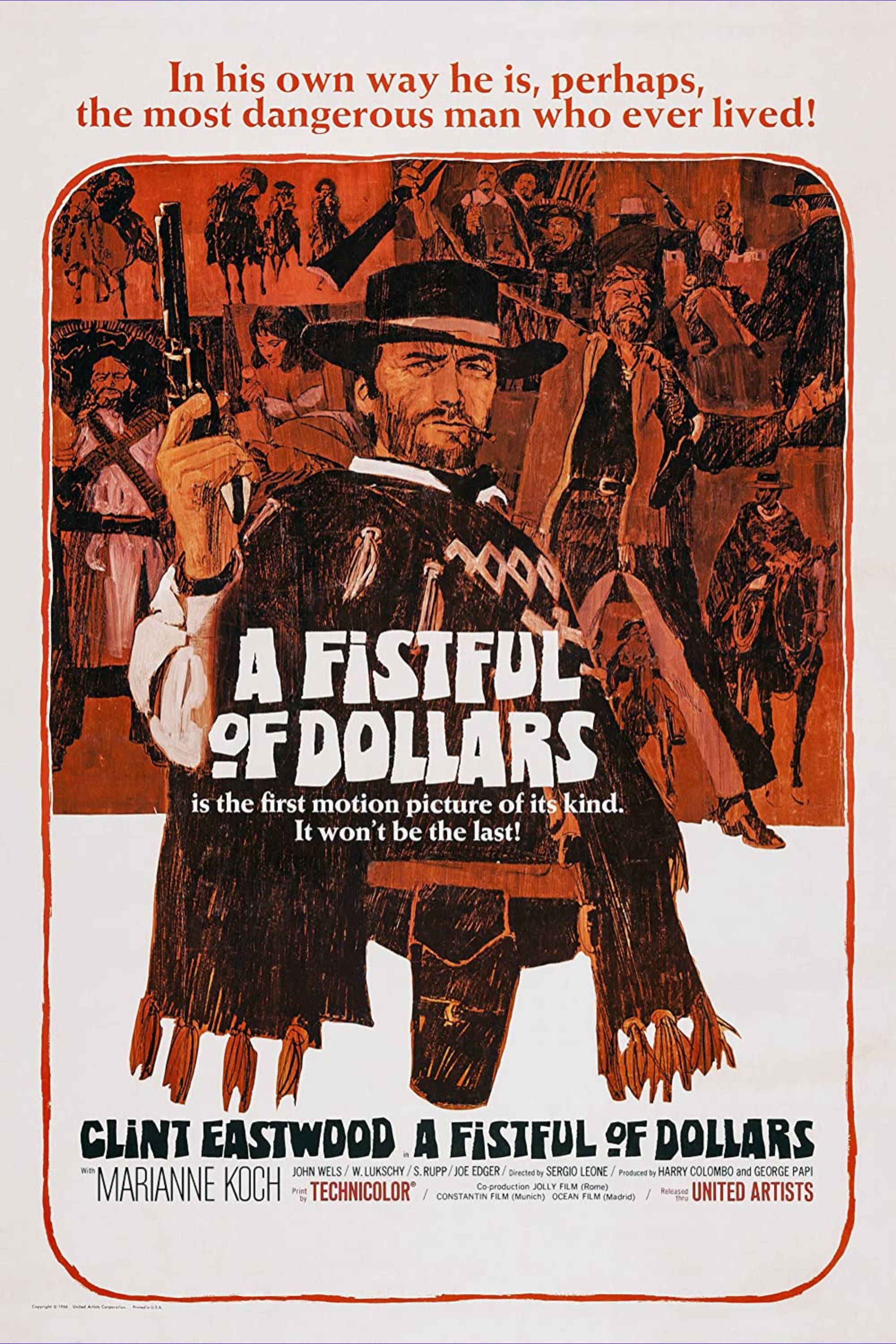
A Fistful of Dollars
-
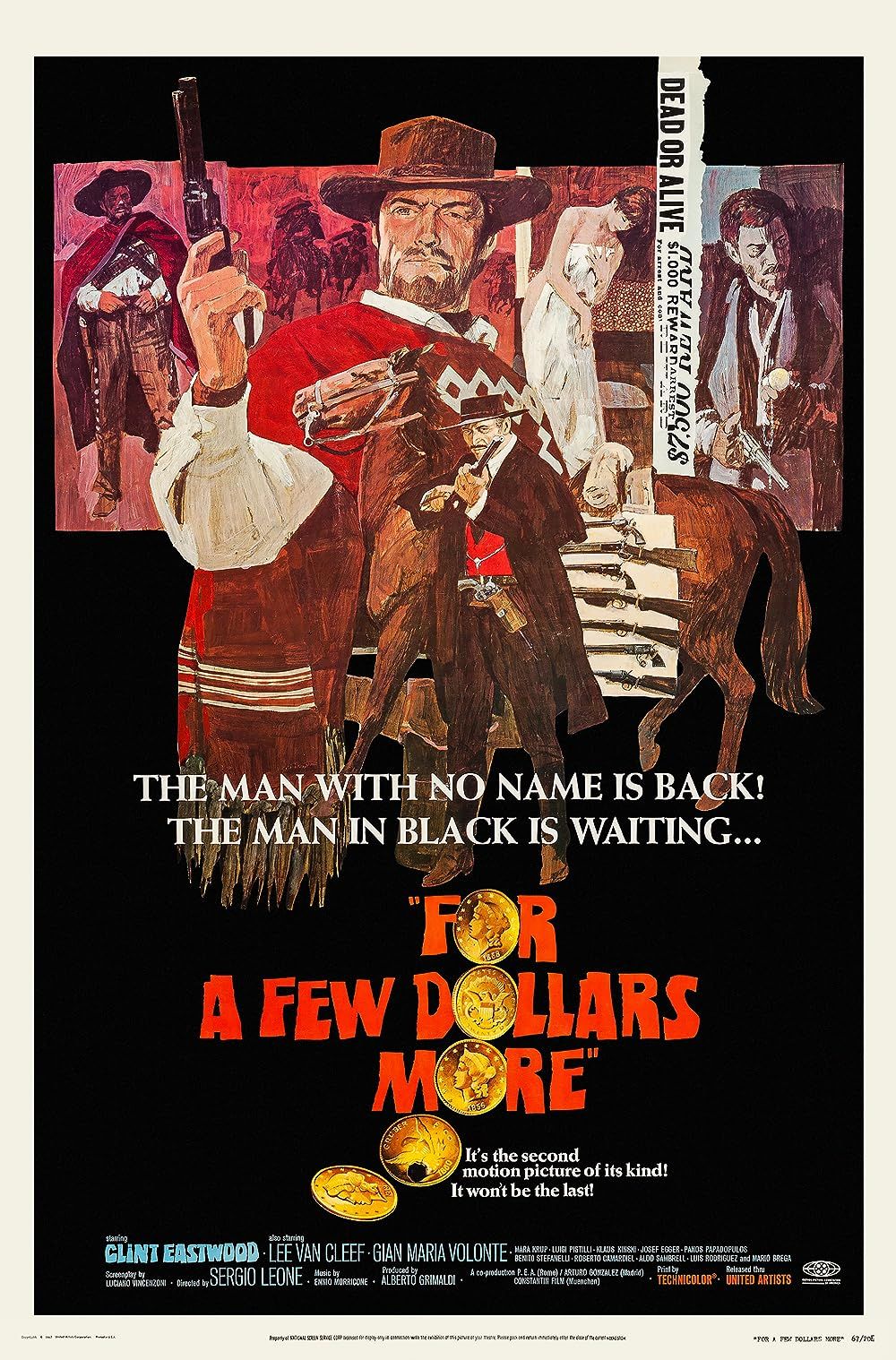
For a Few Dollars More
Two bounty hunters with the same intentions team up to track down an escaped Mexican outlaw.
-
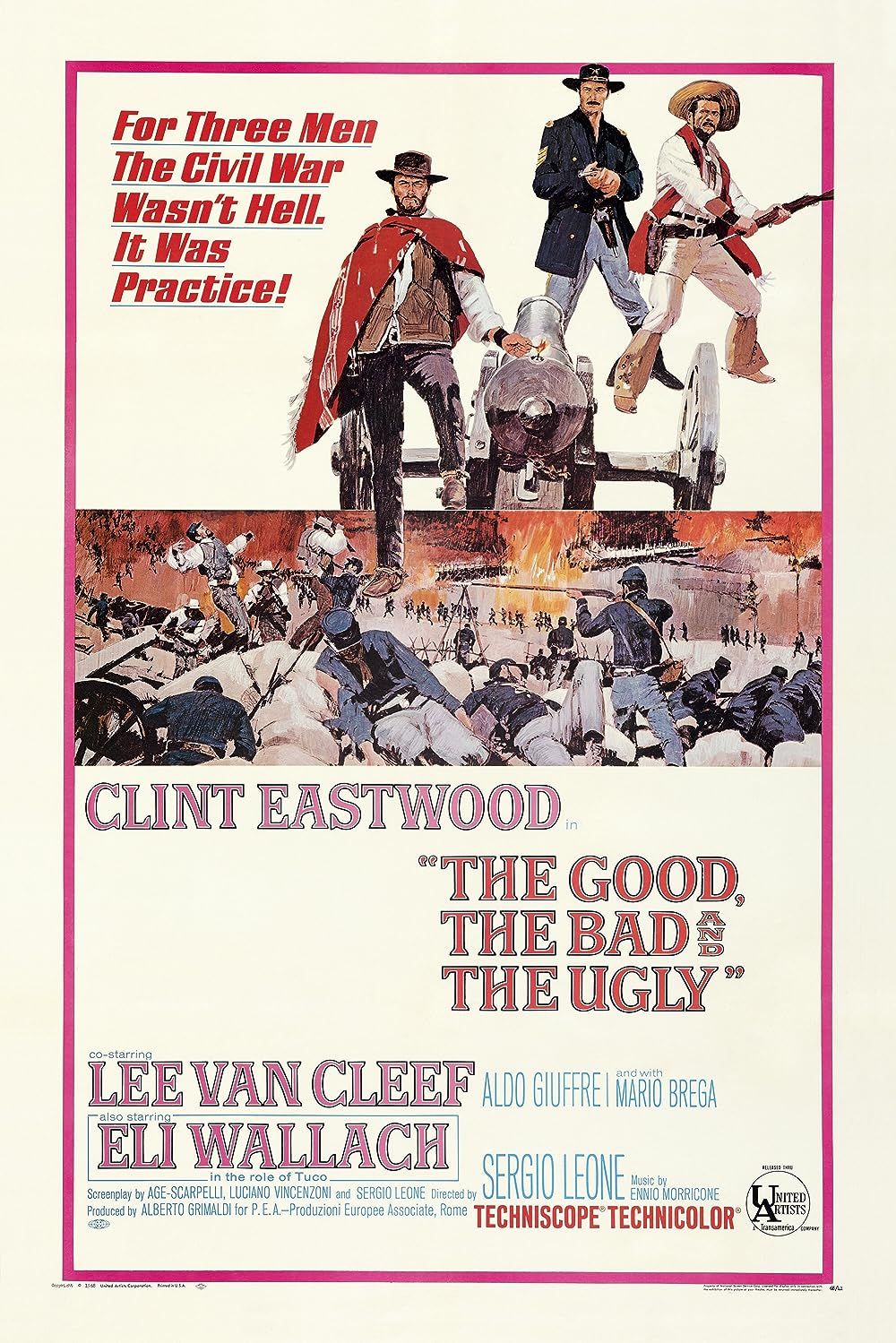
The Good the Bad and the Ugly
A bounty hunting scam joins two men in an uneasy alliance against a third in a race to find a fortune in gold buried in a remote cemetery.

